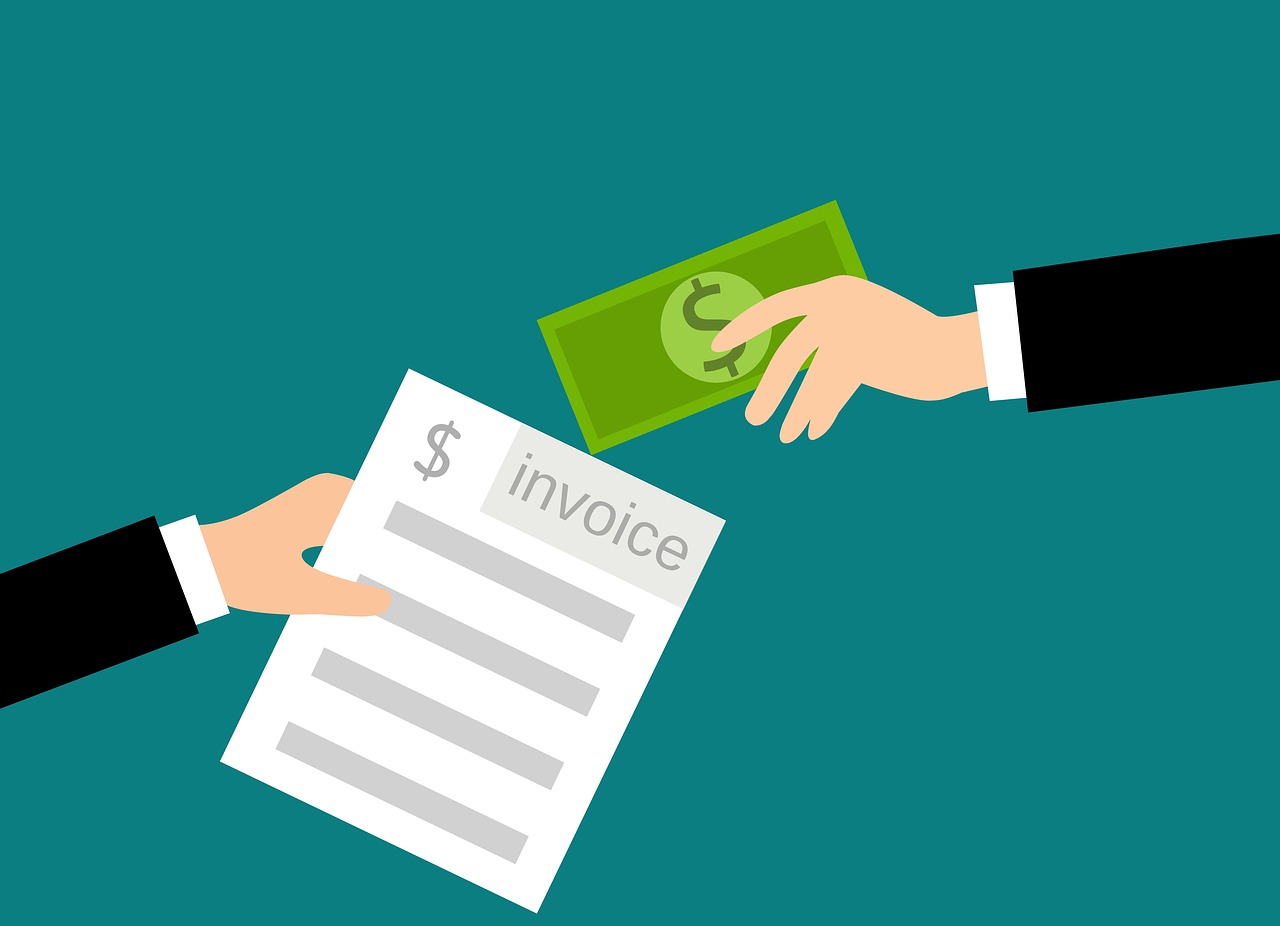Invoice Payment Terms: How to Set Clear and Effective Payment Terms
Running a thriving business is all about understanding the basics. One of these fundamental aspects is setting clear and effective payment terms. Why? Because getting paid on time and managing cash flow is at the heart of every thriving enterprise.
The cornerstone of any successful financial transaction is clarity. Both parties need to understand what is expected and when. Be it a small-scale business owner or a finance manager at a major corporation, defining clear payment conditions can help ensure a robust cash flow. It also helps build stronger relationships with your clients.
In the following sections, we’ll delve into the whys and hows of setting payment terms that work for your business and clients. From understanding common words to negotiating effectively with clients, we’ve got you covered. Let’s get started.
Importance of Setting Clear and Favorable Payment Terms In Invoices
Clear and well-structured payment terms are not just beneficial – they’re essential. They serve as a roadmap, guiding clients on when and how to pay their invoices. But their impact goes beyond just getting paid on time. They play a significant role in maintaining steady cash flow and fostering trust with your customers, two essential aspects of any successful business.

The cash flow connection
Cash flow, put simply, is the cash coming into and going out of your business. When you have more money coming in than going out, your business experiences positive cash flow. This allows your business to expand, pay your staff, and seek out new opportunities. On the flip side, a negative cash flow can quickly lead to significant problems, from difficulty in paying suppliers to potential bankruptcy.
But where do payment terms fit in this picture? The connection is straightforward. When your clients pay their invoices on time, you maintain a positive cash flow. But if transactions are delayed, your cash flow can quickly turn negative. Here are some ways in which clear payment terms can impact your cash flow:
- Steady income: When customers pay on time, you can predict your income more accurately, helping with budget planning.
- Reduced financial stress: Timely payments can eliminate the need for short-term loans to cover operational costs.
- Smooth operations: With regular income, you can pay your suppliers on time, ensuring your business operations run smoothly.
Fostering trust with your customers
Just as your business counts on clients to settle their bills, they count on you to clarify when and how they should pay. Clear terms establish expectations upfront, leaving no room for misunderstanding. Being open about this can significantly improve your business relationship with customers by fostering trust and confidence in your business.
Customers who know what’s expected of them are more likely to pay promptly, creating a beneficial cycle of trust and timely payments. If you’re looking for an efficient way to implement this, our platform at
Saldo Invoice can provide you with all the tools you need to set clear and effective terms.
Understanding Common Payment Terms and Their Implications
Moving along, let’s decode some of the most common payment terms used in business. Understanding these terms is about more than mastering business jargon. It’s about making knowledgeable decisions that can impact your cash flow, customer relationships, and overall business health.
Payment terms you need to know
To start, here are some frequently used terms that you might encounter:
- Net 30, 60, or 90: This refers to the full amount payable within 30, 60, or 90 days after the invoice date. For example, a company that uses “Net 30” expects a remittance within 30 days of invoicing.
- Immediate Payment: A term such as ‘Payable on Receipt’ means the transaction is expected as soon as the goods or services have been received.
- 2/10 Net 30: This is a form of cash discount where clients get a 2% discount if they pay within 10 days. If not, the full amount is due within 30 days.
- Partial Payments: A portion of the total amount is paid over time until the full debt is settled.
- Prepayment: This is when a client pays for a service or product before receiving it.
Understanding these terms is a solid step toward crafting effective policies. But what do these terms mean for your business?
What these terms mean for your business
Payment terms are not just rules on paper; they directly influence how your business functions and how your clients perceive it. Shorter terms, such as ‘Immediate Payment,’ can help maintain a positive cash flow by ensuring that you receive money quickly. However, they might not be feasible for all clients, potentially affecting customer relationships.
Longer terms like ‘Net 60’ or ‘Net 90’ can potentially make your business more appealing to clients because they have more time to pay. But they can strain your cash flow and increase the risk of late payments.
Terms like ‘2/10 Net 30′ strike a balance by encouraging prompt payments while providing flexibility. They offer discounts as an incentive for paying early, which can speed up cash inflow and help maintain a healthy cash flow.
Partial payments and prepayments can minimize risk, especially for high-value projects or for businesses with long manufacturing processes.
Keep in mind there’s no one-size-fits-all strategy for payment terms. You need to understand your business’s unique needs and your customers’ capacities. If you’re looking for some guidance, our collection of
invoice templates offers various examples to suit different business needs.

Factors to Consider When Setting Payment Terms
It’s not enough to understand what various terms mean; it’s equally important to choose the ones that suit your business and your customers the best. It’s a balancing act, and here’s how you can get it right.
Balancing your business’s financial health
Firstly, it’s crucial to understand your own business’s financial needs. Consider your regular expenses, such as wages, rent, utilities, and supplier costs. How soon do you need payments to cover these expenses comfortably?
If your operating costs are high and you need cash regularly, shorter terms like ‘Net 15’ or ‘Immediate Payment’ could be a good fit. However, if you have a buffer and can wait for payments a little longer without financial stress, you might consider longer terms like ‘Net 60’ to attract clients who need more time to pay.
Remember, the key is to choose terms that keep your cash flow positive without putting undue pressure on your clients.
Catering to your customers’ financial capabilities
On the flip side, it’s important to consider your customers’ ability to pay. After all, a too stringent term may discourage potential clients or strain your relationship with existing ones. Understanding your clients’ financial capabilities and payment cycles can guide you in setting mutually beneficial payment terms.
For instance, if you serve small businesses or startups that might not have a lot of cash on hand, offering longer terms or a discount for early payment can be an attractive proposition. Conversely, larger corporations with established financial operations might be comfortable with shorter terms.
Best Practices for Negotiating Payment Terms With Clients
Navigating negotiations around payment terms can be a challenging task. However, it’s a fundamental part of ensuring you get paid on time while maintaining a good relationship with your clients. As with most aspects of business, it’s all about finding a balance. In this case, it’s between what works for your financial flow and what’s feasible for your clients.
Incentives and deterrents can play a significant role in influencing client behavior toward timely payments. They function as a gentle nudge guiding your clients toward fulfilling their obligations within a specified time. Let’s break it down into two main approaches.
Encouraging timely payments with discounts
One effective way to motivate your clients to pay promptly is by offering discounts for early payments. The premise is simple: pay before the due date and get a small percentage off the total invoice amount.
For instance, you could offer a 2% discount if the invoice is paid within ten days. This type of discount is a win-win situation. It encourages your clients to pay sooner, improving your cash flow; in return, they save some money.
At Saldo Invoice, we even provide a
partial payment invoice template to simplify this process. It allows you to set the discount rate and displays the potential savings to your clients.
Deterring late payments with penalties
While incentives are a positive way to encourage timely remittance, sometimes, deterrents are necessary too. Penalties for late payments can serve this purpose. Implementing a penalty system for overdue payments sends a clear message about the importance you place on timely payments.
A late fee, often a percentage of the total invoice amount, added for each week or month past the due date, can incentivize clients to pay on time. However, it’s essential to implement this approach with care, transparency and after informing your clients upfront.
Remember, the goal isn’t to punish your clients but to emphasize the importance of timely payments for the health and sustainability of your business.
Tips for Creating Payment Terms That Encourage Timely Payments
When it comes to invoices, nothing encourages timely payments more effectively than clear, well-crafted terms. A reliable
invoice generator simplifies the invoicing process by automating the creation of invoices, saving time, and reducing errors.If your clients are still determining when or how to pay, the process can easily get delayed. In this section, we’ll share some useful tips to ensure your invoice terms help get your invoices paid on time.

The power of clear and simple terms
Clarity should be your watchword when defining your payment terms. Consider this – a term such as ‘Net 30’ might be clear to you as a business owner, but it might be a cryptic phrase for your customers. And confusion can often lead to delays in payment.
Instead, aim for simplicity. Rather than ‘Net 30’, consider stating ‘Payment due in 30 days from the date of invoice’. This gives your customers a clear, easy-to-understand deadline. And when customers know exactly what is expected, it can help reduce the time it takes to process payments.
Remember, the goal is to make it as straightforward as possible for your clients to fulfill their obligations. By doing so, you’re likely to see a positive impact on your cash flow.
Designing your invoice for success
But clear terms are just one part of the equation. The design of your invoice can also play a pivotal role in securing timely payments. Here’s why: a cluttered or hard-to-read invoice can cause confusion, delays, or even non-payment. On the other hand, a well-designed invoice can make the whole process smooth and effortless for your clients.
For a well-designed invoice, ensure all essential details are prominently displayed and easy to find. This includes your business name and contact details, the client’s name, the invoice date, the due date, and a detailed breakdown of the charges.
And don’t forget the importance of the payment terms. They should be clearly stated, easy to understand, and readily visible.
If you’re wondering where to start, we at Saldo Invoice have designed a
prepayment invoice template that ticks all these boxes. This useful tool can help you craft an invoice that encourages prompt payments and improves your cash flow.
The Power of Clarity for Business Success
Crafting lucid, well-defined payment terms is more than just a formality. It can be the linchpin that holds your business operations together. Well-structured invoice payment terms are essential to keep your cash flow consistent, build client trust, and reduce stress and confusion.
It’s worthwhile to note that every business’s needs and circumstances are unique. Therefore, the payment terms for one business may not necessarily work for another. Thus, it’s crucial to analyze your situation and devise terms that best suit your business and customers. A little effort and attention to detail can make a significant difference in how smoothly your business operates and how well you maintain your client relationships.







